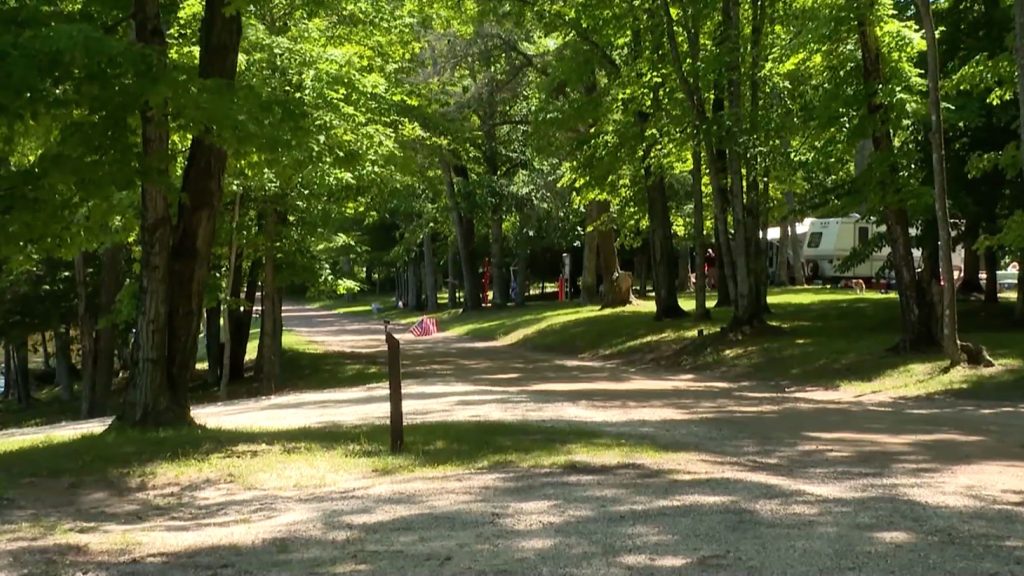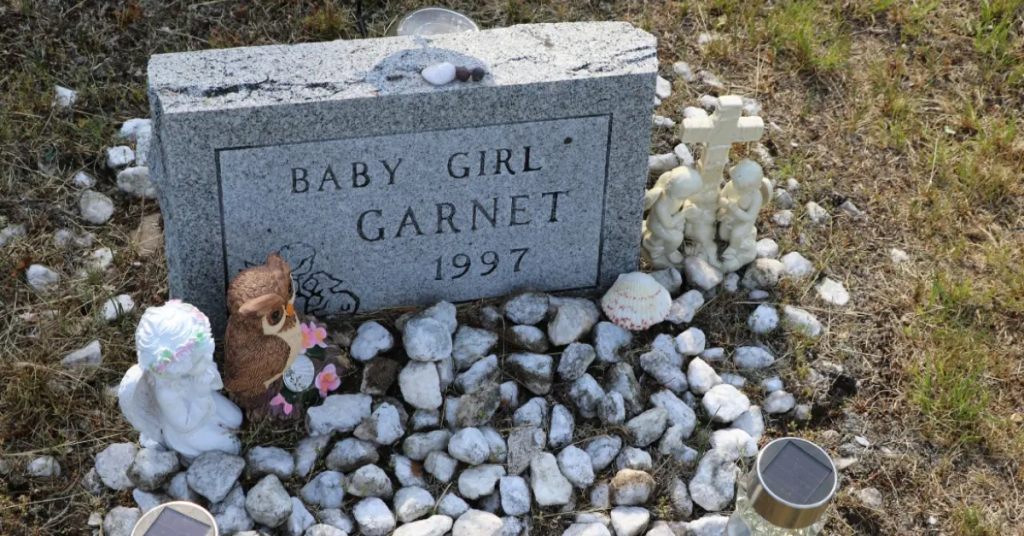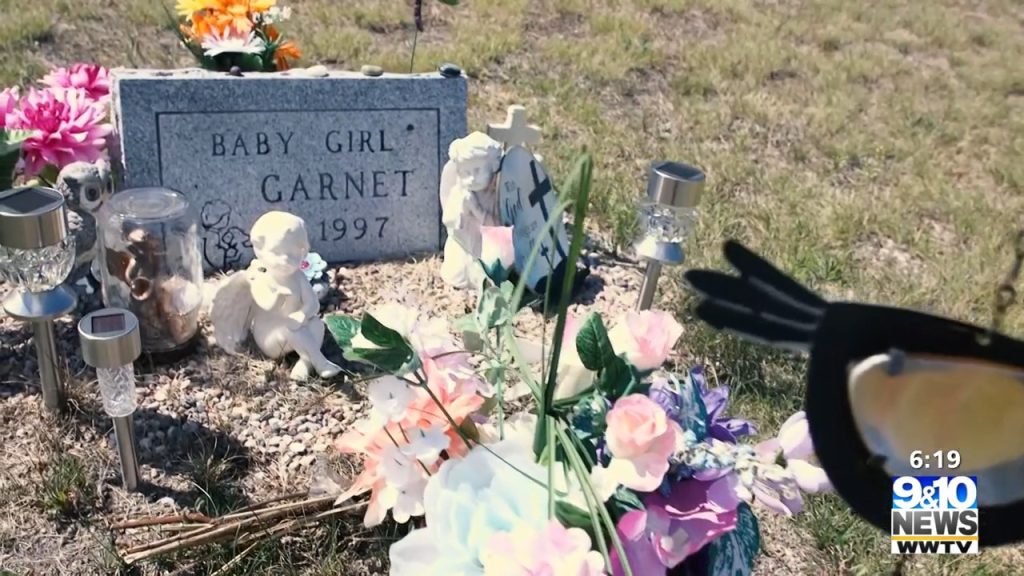In June 1997, the discovery of an infant’s body in an outhouse at Garnet Lake Campground in Michigan’s Upper Peninsula shocked a tight-knit community, sparking the Baby Garnet case—a cold case that remained unsolved for over two decades. Thanks to advancements in DNA technology and an unexpected ancestry kit, justice is now within reach. This article in our DNA-Solved Cases series explores the tragic discovery, the painstaking investigation, and the 2022 arrest that brought closure to a 27-year mystery as we reflect in 2025.
Historical Context: Upper Peninsula in the 1990s

The Upper Peninsula of Michigan, known for its rugged wilderness and small, close-knit communities, was a peaceful region in the 1990s. Garnet Lake Campground, near Hudson Township, offered a serene escape with its campsites and outdoor activities, though its unofficial population of about 60 residents reflected its isolation. The 1990s marked a time of limited forensic technology, with DNA analysis in its infancy, making cold cases like Baby Garnet challenging to solve. The community’s tight bonds—where everyone knew each other—added to the shock when a heinous crime occurred, shattering the perception of safety in this rural haven.
The case’s resurgence in 2017 coincided with a global surge in genetic genealogy, fueled by consumer DNA kits from companies like Ancestry and 23andMe. This technological leap, combined with renewed law enforcement efforts, transformed how cold cases were approached, setting the stage for the Baby Garnet breakthrough.
The Tragic Discovery: June 1997

On June 26, 1997, workers preparing to reopen Garnet Lake Campground after a two-year closure made a horrifying find. While using a suction machine to clean an outhouse—a small outdoor toilet structure set behind a hill near an open field—the machine clogged. Upon investigation, they discovered the decomposing body of a newborn infant lodged in the waste tank. The 911 call triggered an immediate response, and the remains were rushed for autopsy.
The autopsy revealed the infant, a girl estimated at 38 to 40 weeks gestation—full term—was likely placed there as early as June 1, 1997. The umbilical cord was missing, and the cause of death remained undetermined, leaving open the possibility of stillbirth or homicide. The gruesome scene—her tiny body submerged in sewage, flesh partially degraded—horrified investigators. The Mackinac County Sheriff’s Office and Michigan State Police launched an intensive investigation through the summer and fall of 1997, but no witnesses or viable leads emerged. The community, devastated, named her “Baby Garnet” and buried her less than a mile away, hoping a memorial might prompt someone to come forward. No one did.
The Investigation Stalls and Evolves

With no suspects and limited evidence, the Baby Garnet case went cold. Detectives theorized the mother was a local resident, possibly hiding a pregnancy with unexplained weight gain since September 1996, followed by sudden weight loss and baggy clothing by June 1997. The remote location suggested someone familiar with the area, yet the community’s closeness led residents to deny it could be one of their own, comparing it to urban crimes rather than their small town.
In 2017, new Mackinac County Sheriff Ed Wil reopened the case, inspired by successes in forensic genealogy elsewhere. By 2022, advancements in DNA technology offered new hope. Skeletal remains, preserved since 1997, were sent to a private lab with FBI assistance. A DNA profile was developed, revealing a specific familial lineage. This breakthrough came through an unexpected source: Jose, a young woman from the area, who submitted her DNA to an ancestry kit out of curiosity two years prior. Her profile, uploaded to a worldwide database like GEDmatch, matched as a distant relative to the victim.
The Breakthrough and Arrest: 2022

Jenna Rose Gerwatowski/Mackinac County Sheriff’s Office
In 2022, investigators traced Jose’s lineage, connecting her DNA to her mother, Jenna, and ultimately to Jenna’s mother, Nancy Gerowski, then 60 and living in Pinedale, Wyoming. A search warrant confirmed Nancy’s parentage through additional DNA testing. On May 10, 2024, the 92nd District Court in St. Ignace bound Nancy over for trial, charging her with open murder (a potential life sentence), involuntary manslaughter, and concealing the death of an individual.
Authorities allege Nancy gave birth alone at her Newberry, Michigan, home in 1997, where the infant—later named Baby Garnet—died due to asphyxiation, possibly preventable with medical intervention. Instead, she allegedly hid the newborn’s body in the outhouse, over 20 miles away, leaving it to decompose in filth. The emotional weight of this act—abandoning a child to such a degrading fate—struck the community deeply. Nancy, released on bond with a GPS tracker, awaits a hearing scheduled for December 12, 2024, though its outcome remains pending as of June 2025. The father, identified but unaware of the pregnancy, is considered a victim, not a suspect.
The Human Story and Legacy

Jose’s TikTok video, where she recounted the detective’s call and her grandmother’s arrest, went viral, drawing global attention. Having never met Nancy—due to undisclosed family reasons—she approached the case with a mix of shock and detachment, later teaming with her mother for a planned documentary to share their story responsibly. The case’s resolution, driven by Jose’s ancestry kit, highlights the power of citizen DNA contributions, though it also sparked debates about privacy versus justice.
The Baby Garnet case, solved after 27 years, exemplifies how forensic genealogy can crack cold cases, offering closure to a community that grieved an unnamed child. Her grave, marked “Baby Girl Garnet,” stands as a symbol of resilience. This article in our DNA-Solved Cases series honors her memory, urging continued support for DNA-driven justice efforts as we look to 2025.
Sources
- Michigan Department of Attorney General. (2024). Press release on Nancy Gerowski’s trial binding.
- Mackinac County Sheriff’s Office. (1997–2022). Case updates on Baby Garnet investigation.
- Detroit Free Press. (2022–2024). Coverage of the Baby Garnet DNA breakthrough.
- TikTok Archives. (2023). Videos by Jose and Shelly on the Baby Garnet case.
- GEDmatch Blog. (2022). Insights into forensic genealogy in cold case resolutions.
- Upper Michigan Source. (2024). Community reactions to the Baby Garnet case resolution.

Leave a Reply
You must be logged in to post a comment.